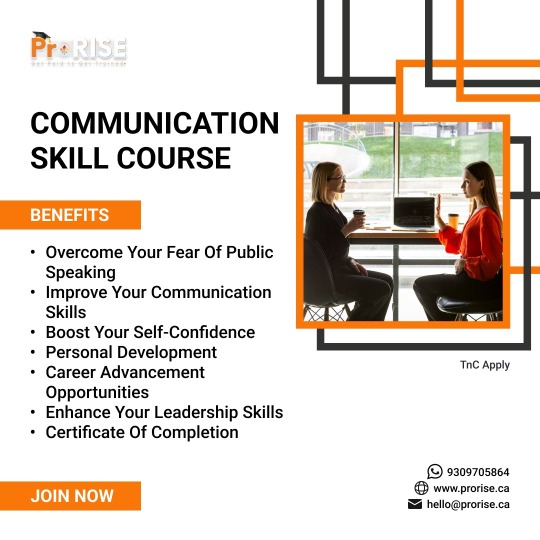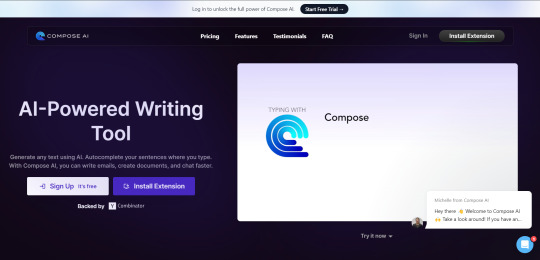#ProfessionalCommunication
Explore tagged Tumblr posts
Text

Sculpting Excellence in Professional English Communication Skills With Steps2success
Embark on a transformative journey with our UK-Qualified TESOL specialists, curating personalized 1-2-1 and group training that hones Professional English Communication Skills. In a concise yet comprehensive approach, we navigate through crucial aspects of effective communication for individuals and institutions.
Unlocking Verbal Mastery: Delve into the core of communication with our specialists, addressing General Communication Concepts & Problems. From conquering public speaking jitters to becoming an adept listener, we sculpt your ability to express ideas with finesse.
Listening Prowess: Decode the art of being an active listener, coupled with effective comprehension and note-taking skills. These are not just academic essentials but tools for a lifetime of successful communication.
Professional Landscape Navigation: Seamlessly navigate the professional terrain with honed skills in Meetings and Negotiations, English for International Business, and a grasp of Legal Aspects of Business Communication. We bridge language gaps and guide you through the intricacies of business dialogue.
Crafting the Written Word: From Academic and Research Writing to the Legal nuances of business communication, we shape your ability to articulate thoughts in writing. Our specialists offer guidance on CVs, Application Letters, and the principles of Report Writing.
Social and Professional Finesse: Beyond the formalities, we explore Social English, instilling warmth into professional interactions. Learn the principles that underpin successful Business Communication.
Toolbox for Effective Communication: Hone the skills essential for seamless communication, including Developing Reading Skills, Presentation Skills, and Vocabulary Extension. Our specialists equip you with the tools to thrive in a dynamic professional environment.
Unveiling the Unspoken: Learn the art of Non-verbal Communication, adaptability in a changing world, and revisit Grammar with a fresh perspective. These nuances, often overlooked, become the foundation of impactful communication.
Step into a world where words become your greatest asset, and communication is an art form, guided by our TESOL specialists towards a future of Professional English Communication Excellence.
#ProfessionalCommunication#EnglishSkills#TESOLSpecialists#EffectiveListening#BusinessCommunication#VerbalMastery#CommunicationExcellence#CareerSkills#GlobalCommunication#CommunicationJourney#UnlockingPotential#SkillsMatter
5 notes
·
View notes
Text
Discover the World of Icom Radios at ChosenAction.com
Are you a radio enthusiast, a professional in need of reliable communication, or someone who appreciates the art of seamless connectivity? If so, you're in for a treat! Today, we're diving into the world of Icom radios, a brand synonymous with quality, innovation, and reliability in the realm of radio communication. And the best part? You can explore and purchase a wide range of Icom products at our website, ChosenAction.com.
Why Icom?
Icom America has been a leading name in the radio communications industry for years. Known for their commitment to creating products that are both innovative and reliable, Icom has a range of radios that cater to various needs – from amateur radio enthusiasts to professional maritime and aviation communications.

The Icom Range at ChosenAction.com
At ChosenAction.com, we understand the importance of quality communication, and that's why we offer a diverse range of Icom radios. Whether you're looking for handheld VHF radios, mobile units for your vehicle, or sophisticated base stations, we've got you covered.
Handheld Radios
Our collection of Icom handheld radios is perfect for those who need reliable communication on the go. These radios are not only durable but also come with features like GPS, digital noise cancellation, and waterproofing, making them ideal for outdoor adventures or professional use in challenging environments.

Mobile Radios
For those who need a reliable communication setup in their vehicles, our Icom mobile radios are the perfect fit. With features like large displays, intuitive controls, and robust build quality, these radios ensure you stay connected no matter where your journey takes you.

Base Stations
For the amateur radio enthusiast or the professional who needs a central communication hub, our Icom base stations offer the perfect blend of power and performance. These units are designed for clear, consistent communication across various frequencies, ensuring you're always in touch when it matters most.

Why Choose ChosenAction.com for Your Icom Radio?
At ChosenAction.com, we're not just about selling products; we're about providing solutions. We understand the critical role that communication plays in both professional and personal settings. That's why we offer:
Expert Advice: Our team is knowledgeable about every product we sell, ensuring you get the best advice for your specific needs.
Competitive Pricing: We offer competitive pricing on all our Icom products, ensuring you get value for your money.
Quality Customer Service: Our customer service team is here to assist you with any queries or issues, ensuring a smooth shopping experience.
Conclusion
Whether you're a seasoned radio enthusiast or new to the world of radio communication, Icom radios offer the quality and reliability you need. And for the best shopping experience, look no further than ChosenAction.com. Explore our range of Icom products today and step into a world where communication knows no bounds!
youtube
#IcomRadios#RadioCommunication#HandheldRadios#MobileRadios#BaseStations#AmateurRadio#ProfessionalCommunication#ChosenAction#CommunicationTech#VHFRadios#icomamerica#Youtube
2 notes
·
View notes
Photo

Communication shortcuts often backfire. Quick messages lead to endless follow-ups, while thoughtful communication saves time. Learn why slowing down speeds things up.
0 notes
Text
Tired of writing "Thank you for confirming"? 💬 This guide gives you elegant alternatives to enhance your communication skills. Make your messages stand out with these helpful tips!
📖 Check it out: https://grammarecho.com/thank-you-for-confirming/
0 notes
Text
The Importance of Audience Analysis in Creating Effective Business Proposals
Report proposal: Expert Q&A Guide
1.What is business proposal report?
A business proposal report is a document that outlines a proposed project or business venture. It includes information on objectives, strategies, budget, and expected outcomes to persuade stakeholders or potential investors to support the initiative. The report serves as a formal presentation of ideas and plans, detailing how the proposal addresses specific needs or opportunities.
2. What is a business proposal example?
A business proposal example could be a document outlining a plan to start a catering service. It would include an executive summary, market analysis, services offered, pricing strategy, marketing plan, and financial projections. The goal is to persuade potential clients or investors of the viability and benefits of the catering service.
3. How do you write a business report and proposal?
To write a business report, gather data, analyses findings, and structure your report with an introduction, body, and conclusion. Use clear headings and visuals for clarity. For a proposal, outline the problem, present your solution, and detail the benefits, budget, and timeline. Keep both documents concise, professional, and focused on the audience's needs.
4. What are business proposal types?
Business proposal types include:
1. **Solicited Proposals**: Requested by a client or organization.
2. **Unsolicited Proposals**: Submitted without a request, often to generate interest.
3. **Formal Proposals**: Detailed documents following a specific structure.
4. **Informal Proposals**: Shorter, less structured communications.
5. **Continuing Proposals**: Ongoing projects or services.
6. **Pre-Proposals**: Initial ideas or concepts before a detailed proposal.
5. What is a small business proposal?
A small business proposal is a document that outlines a business idea, plan, or project. It typically includes details about the business objectives, target market, budget, financial projections, and strategies for success. The proposal is intended to attract investors, secure funding, or gain client approval, demonstrating the viability and potential profitability of the business concept.

Visit: VS Website See: VS Portfolio
#BusinessProposal#BusinessReport#BusinessStrategy#ProposalTips#BusinessGoals#ProfessionalCommunication
0 notes
Text
How Replix AI Enhances Professional Communication

In today's fast-paced business environment, effective communication is key. Replix AI empowers professionals by simplifying content creation across various platforms, ensuring that messages are clear and engaging.
Main Content:
Problem Statement: Professionals often struggle with crafting compelling messages due to time constraints or lack of writing skills, which can lead to miscommunication or missed opportunities.
Application: By utilizing Replix AI, users can generate polished emails and social media posts quickly. For instance, a marketing manager can use Replix AI to create engaging LinkedIn updates or respond to customer inquiries in a professional tone.
Outcome: Users experience increased engagement and improved communication efficiency, resulting in stronger relationships with clients and colleagues.
Industry Examples:
Marketing: Marketers leverage Replix AI for creating compelling campaign content and social media posts.
Customer Service: Support teams use it to draft quick responses to customer inquiries, enhancing service quality.
Sales: Sales professionals utilize it for crafting personalized emails and follow-up messages.
Unlock the potential of your communications with Replix AI. Discover more at aiwikiweb.com/product/replix
0 notes
Text

#FormalLetterWriting#ProfessionalLetterWriting#LetterWritingSkills#BusinessCommunication#WritingTips#LearnToWrite#ProfessionalCommunication#FormalWriting#WritingTutorials#BusinessCorrespondence
0 notes
Text
0 notes
Text
7 Tips to Stand Out as a Job Seeker on WhatsApp
🚀 Looking to make a great impression with recruiters? 🚀
Check out my latest article on how to communicate effectively with recruiters on WhatsApp. 📱 From crafting professional messages to using WhatsApp Web for efficiency, I've covered essential tips to help you stand out in your job search.
🔹 Start with a strong introduction 🔹 Avoid common pitfalls like sending screenshots 🔹 Use AI tools wisely 🔹 Bonus Tip: Switch to WhatsApp Web for smoother communication
Don’t miss these key strategies to enhance your job-seeking process!
#JobSearch#WhatsAppTips#CareerAdvice#JobSeekers#Recruitment#ProfessionalCommunication#JobHunting#WhatsAppForJobs#ResumeTips#CareerTips#RuchirGupta
0 notes
Text
Elevate your business communication with a dedicated phone number from Telfon! 📞✨ Keep your personal and professional calls separate, and manage everything from one easy-to-use app. Choose from over 170 countries, integrate seamlessly with Twilio, and start connecting with clients globally in no time. 🌍📲
Visit to know more - mytelfon.com
#BusinessPhone#VirtualNumber#GlobalCalls#ProfessionalCommunication#Twilio#ProductivityTools#WorkFromAnywhere#BusinessGrowth#TechSolutions
0 notes
Text
Communication Skill Course
With our extensive ProRise course, you may become an expert communicator. Gain the abilities to interact with others and thrive in any circumstance, from speaking with confidence to actively listening to others. Join today!
For more info: https://prorise.ca/

#prorise#StudywithConfidence#PublicSpeaking#ConfidenceBuilding#LeadershipDevelopment#ProfessionalCommunication#BusinessCommunication#May2024#TuesdayThoughts#ListeningSkills#PresentationSkills
1 note
·
View note
Text
#6reasons#blog#blogpost#branding#businessemail#collaborationtools#compliance#customersupport#dataprivacy#datasecurity#email#emailhosting#productivity#professionalcommunication#reliableUptime#scalability#gauravgo#gauravgoposts
0 notes
Text
The Power of Words: How to Avoid Using “Help” When Charging for a Service

Introduction
Using the word help when charging for a service or a product can be problematic for several reasons. First, it can imply that the service or product is not worth paying for, or that the customers or clients are doing a favour by buying it. This can undermine the value and benefits of the service or product, and make the customers or clients feel guilty or resentful. Second, it can create confusion about the nature and scope of the service or product, and the expectations and responsibilities of both parties. This can lead to misunderstandings, disputes, or dissatisfaction. Third, it can convey a lack of confidence, professionalism, or expertise in the service or product, and the people who provide it. This can damage the credibility, reputation, and trust of the professionals, and affect their ability to attract and retain customers or clients.
Therefore, it is important to choose the right words to communicate the value and benefits of the service or product, and how it can solve the problems or meet the needs of the customers or clients. Instead of using the word help, which can be vague and passive, it is better to use words that are specific and active, such as provide, offer, deliver, create, design, implement, etc. These words can highlight the features and advantages of the service or product, and the skills and qualifications of the professionals. They can also show respect and appreciation for the customers or clients, and their time and money.
The main points of the article are:
Using the word help when charging for a service or a product can be misleading, confusing, or demeaning for the customers or clients, and can reduce the value and benefits of the service or product.
Choosing the right words to communicate the value and benefits of the service or product can enhance the credibility, reputation, and trust of the professionals, and their relationship with the customers or clients.
Words that are specific and active, such as provide, offer, deliver, create, design, implement, etc., can better convey the value and benefits of the service or product, and the professionalism and expertise of the people who provide it.
The problem of using the word help when charging for a service or a product
Using the word help when charging for a service or a product can have negative consequences for both the professionals and their customers or clients. The word help can imply different meanings and emotions, depending on the context and the tone of the communication. However, in general, using the word help can suggest that the service or product is not a mutually beneficial exchange of value and expertise, but rather a favor, a charity, or a burden.
When a professional uses the word help to describe their service or product, they may unintentionally convey that they are doing something extra or generous for their customers or clients, without expecting anything in return. This can make the customers or clients feel like they are receiving a gift or a donation, rather than paying for a solution or a benefit. For example, a graphic designer who says “I can help you with your logo design for $500” may make their client feel like they are getting a bargain or a freebie, rather than a professional service that reflects the designer’s skills, experience, and creativity.
Alternatively, using the word help can also imply that the service or product is a burden or a hassle for the professional, and that they are reluctantly agreeing to do it for the sake of the customers or clients. This can make the customers or clients feel like they are imposing or bothering the professional, rather than hiring them for a job that they are qualified and willing to do. For example, a plumber who says “I can help you fix your leaky faucet, but it will cost you $200” may make their customer feel like they are asking for a favor or a nuisance, rather than a necessary and valuable service that requires the plumber’s expertise, tools, and time.
Using the word help can also undermine the professionalism, confidence, and authority of the service or product provider, and make them appear needy, desperate, or incompetent. When a professional uses the word help, they may unintentionally signal that they are not confident or proud of their service or product, and that they are seeking validation or approval from their customers or clients. This can make the customers or clients doubt the quality and reliability of the service or product, and question the credibility and reputation of the professional. For example, a lawyer who says “I can help you with your legal case, but I need a good review from you” may make their client feel like they are dealing with an insecure or inexperienced lawyer, rather than a competent and trustworthy one.
Moreover, using the word help can also create unrealistic expectations, dissatisfaction, or resentment among the customers or clients, and make them feel obligated, pressured, or exploited. When a professional uses the word help, they may unintentionally set up a vague or ambiguous scope and outcome for their service or product, and leave room for misunderstanding or disagreement with their customers or clients. This can lead to confusion, conflict, or disappointment, and damage the relationship between the professional and their customers or clients. For example, a coach who says “I can help you achieve your goals, but you have to do the work” may make their client feel like they are not getting enough guidance or support, rather than a clear and realistic plan and accountability.
Some examples of how using the word help can backfire or damage the relationship between the professionals and their customers or clients are:
A photographer who says “I can help you take some photos for your website, but you have to pay for the prints and the editing” may make their customer feel like they are being charged for hidden or extra costs, rather than a transparent and fair price.
A consultant who says “I can help you improve your business strategy, but you have to follow my advice exactly” may make their client feel like they are being dictated or controlled, rather than a collaborative and flexible partner.
A therapist who says “I can help you overcome your anxiety, but you have to trust me completely” may make their client feel like they are being manipulated or coerced, rather than a respected and empowered individual.
Therefore, it is important to avoid using the word help when charging for a service or a product, and instead use words that are specific, active, and positive, such as provide, offer, deliver, create, design, implement, etc. These words can better communicate the value and benefits of the service or product, and the professionalism and expertise of the people who provide it. They can also show respect and appreciation for the customers or clients, and their time and money.
The importance of choosing the right words to communicate the value and benefits of the service or product
Choosing the right words to communicate the value and benefits of the service or product is crucial for attracting, engaging, and converting customers or clients. The right words can convey the following aspects of the service or product:
How it can solve the problems, needs, or desires of the customers or clients. The right words can show how the service or product can address the pain points, challenges, or goals of the target audience, and how it can make their lives easier, better, or happier. For example, a fitness app that says “Lose weight, get fit, and feel great with our personalized workouts and nutrition plans” can appeal to the customers or clients who want to improve their health and well-being.
How it can differentiate itself from the competitors. The right words can highlight the unique features, advantages, or benefits of the service or product, and how it can offer more value, quality, or convenience than the alternatives. For example, a cloud storage service that says “Store, access, and share your files securely and easily with our unlimited and affordable plans” can stand out from the other cloud storage services that may have limited storage, higher prices, or lower security.
How it can demonstrate the professionalism, confidence, and authority of the service or product provider. The right words can showcase the skills, experience, and expertise of the people who provide the service or product, and how they can deliver on their promises, meet the expectations, and exceed the standards of the customers or clients. For example, a web design agency that says “We create stunning, responsive, and user-friendly websites that drive traffic, conversions, and sales for your business” can impress the customers or clients with their portfolio, testimonials, and results.
Choosing the right words can also create positive emotions and perceptions among the customers or clients, and make them feel respected, appreciated, or empowered. The right words can do the following:
Create realistic expectations, satisfaction, or gratitude. The right words can set clear and honest expectations for the customers or clients, and avoid overpromising or underdelivering. The right words can also express appreciation and gratitude for the customers or clients, and acknowledge their feedback, loyalty, or referrals. For example, a software company that says “Thank you for choosing our software. We value your opinion and would love to hear from you. Please take a few minutes to complete this survey and let us know how we can improve our service” can show that they care about the customers or clients and their satisfaction.
Make them feel respected, appreciated, or empowered. The right words can show respect and appreciation for the customers or clients, and their time, money, and preferences. The right words can also empower the customers or clients to make informed and confident decisions, and to take action on their goals or needs. For example, a coaching service that says “You have the potential to achieve anything you want. We are here to support you, guide you, and inspire you. Book a free consultation today and discover how we can help you reach your full potential” can motivate the customers or clients to take the next step and sign up for the service.
Some examples of how choosing the right words can enhance or improve the relationship between the professionals and their customers or clients are:
A travel agency that says “We know how important your vacation is to you. That’s why we offer personalized and flexible travel packages that suit your budget, preferences, and schedule. Whether you want to explore exotic destinations, relax on the beach, or enjoy the culture and cuisine, we have the perfect package for you. Contact us today and let us plan your dream vacation” can attract and retain customers or clients who are looking for a customized and hassle-free travel experience.
A cleaning service that says “We understand how busy you are and how much you value your time. That’s why we offer reliable, efficient, and affordable cleaning services that will make your home sparkle. We use eco-friendly products, trained and background-checked staff, and a 100% satisfaction guarantee. You can book online in minutes, choose your preferred date and time, and pay securely online. No contracts, no hidden fees, no worries. Just sit back and enjoy your clean home” can appeal to and satisfy customers or clients who are looking for a convenient and trustworthy cleaning service.
A bakery that says “We are passionate about baking delicious, fresh, and beautiful cakes, cookies, and pastries for your special occasions. We use only the finest ingredients, locally sourced and organic whenever possible. We cater to your dietary needs and preferences, whether you are vegan, gluten-free, or allergic to nuts. We also offer custom designs and flavors, so you can have the cake of your dreams. Order online or visit our store and taste the difference” can entice and delight customers or clients who are looking for a quality and personalized bakery service.
The alternative words that can be used instead of help
The word help can have different connotations and implications, depending on the context, tone, and purpose of the communication. Sometimes, using the word help can be appropriate and effective, such as when asking for or offering assistance, support, or guidance. However, sometimes, using the word help can be inappropriate or ineffective, such as when charging for or promoting a service or a product. In such cases, it is better to choose alternative words that can communicate the value and benefits of the service or product more clearly and convincingly.
Some alternative words that can be used instead of help are:
Provide: This word means to supply or furnish something that is needed or desired. It can be used to describe the service or product as a solution or a benefit that meets the needs or wants of the customers or clients. It can also show the professionalism and expertise of the service or product provider, and their ability to deliver what they promise. For example, a tutor who says “I provide math tutoring services for students of all levels” can convey that they have the skills and qualifications to teach math effectively, and that they can cater to the different learning needs and goals of the students.
Offer: This word means to present or propose something for acceptance or rejection. It can be used to describe the service or product as an opportunity or an option that the customers or clients can choose or consider. It can also show the respect and appreciation of the service or product provider, and their willingness to accommodate the preferences or requests of the customers or clients. For example, a hairstylist who says “I offer a range of hair services, from cuts and colours to treatments and extensions” can convey that they have a variety of skills and services to suit the different tastes and styles of the customers, and that they are open to suggestions and feedback.
Deliver: This word means to bring or send something to a destination or a recipient. It can be used to describe the service or product as a result or an outcome that the customers or clients can expect or receive. It can also show the reliability and efficiency of the service or product provider, and their ability to meet the expectations and standards of the customers or clients. For example, a caterer who says “I deliver fresh, delicious, and affordable food for any occasion” can convey that they have the quality and value to satisfy the different needs and budgets of the customers, and that they can provide the food on time and as ordered.
Create: This word means to make or produce something new or original. It can be used to describe the service or product as a creation or an innovation that the customers or clients can enjoy or admire. It can also show the creativity and uniqueness of the service or product provider, and their ability to impress and delight the customers or clients. For example, a florist who says “I create beautiful, custom-made floral arrangements for any event” can convey that they have the talent and vision to design and craft stunning and personalized flowers for the different occasions and themes of the customers, and that they can make the event more memorable and special.
Design: This word means to plan or conceive something with a specific purpose or intention. It can be used to describe the service or product as a design or a plan that the customers or clients can use or follow. It can also show the strategy and logic of the service or product provider, and their ability to solve and optimize the problems or needs of the customers or clients. For example, a web developer who says “I design user-friendly, responsive, and secure websites for your business” can convey that they have the knowledge and skills to build and maintain websites that are easy to use, adapt to different devices, and protect the data and privacy of the customers, and that they can help the business grow and succeed.
Implement: This word means to put something into effect or action. It can be used to describe the service or product as an implementation or an execution that the customers or clients can rely on or benefit from. It can also show the action and performance of the service or product provider, and their ability to achieve and deliver the goals or objectives of the customers or clients. For example, a marketing consultant who says “I implement effective and measurable marketing strategies for your brand” can convey that they have the experience and tools to develop and apply marketing techniques that are relevant and impactful for the brand, and that they can track and report the results and outcomes of the marketing campaigns.
Conclusion
Using the right words to communicate the value and benefits of the service or product is essential for attracting, engaging, and converting customers or clients. In this article, we have discussed why using the word help can be problematic, and what alternative words can be used instead. We have also explained how to communicate the value and benefits of the service or product in terms of features, benefits, and needs, and how to create positive emotions and perceptions among the customers or clients. By choosing the right words, you can convey the essence of your brand, differentiate yourself from the competitors, demonstrate your professionalism and expertise, and create realistic expectations and satisfaction. You can also make your customers or clients feel respected, appreciated, and empowered, and build a lasting and loyal relationship with them.
To apply the concepts in this article, we suggest that you review your current communication materials, such as your website, brochures, emails, or social media posts, and identify where you can improve your word choice and value communication. You can also conduct surveys, interviews, or focus groups with your existing or potential customers or clients, and ask them what words or phrases resonate with them, and what value and benefits they are looking for in your service or product. You can also test different versions of your communication materials, and measure the response and feedback from your audience.
Some questions or challenges that remain to be explored are how to adapt your word choice and value communication to different cultures, languages, and contexts, and how to keep up with the changing needs and preferences of your customers or clients. You can also research how other successful brands or professionals communicate their value and benefits, and learn from their best practices and examples.
We hope that this article has helped you understand the importance and the art of using the right words to communicate the value and benefits of your service or product, and how it can benefit both you and your customers or clients. We encourage you to apply the concepts and tips in this article, and see the results for yourself. Remember, words matter, and choosing the right ones can make all the difference.
#WordsMatter#ServiceValue#LanguageImpact#BusinessCommunication#ClientConfidence#EffectiveLanguage#ServicePricing#CommunicationStrategies#ExpertiseShowcase#WordsInBusiness#PowerfulCommunication#PricingStrategy#ClientEngagement#AvoidingHelp#LanguageInfluence#BusinessSuccess#ServiceChargeTips#ClientRelations#ProfessionalCommunication#ValuePresentation
0 notes
Text
#DataScience#LearnDataScience#DataScienceCourse#DataScienceTraining#DataScienceForBeginners#DataScienceSkills#ProfessionalEnglish#BusinessEnglish#EnglishCommunication#ImproveEnglish#EnglishForWork#ProfessionalCommunication#ArtificialIntelligence#LearnAI#AICourse#FutureOfAI#ArtificialIntelligenceTraining#AIForBeginners#MachineLearning#LearnMachineLearning#MLCourse#MachineLearningTraining#MLForBeginners#MLSkills#PythonProgramming#LearnPython#PythonCourse#PythonForBeginners#PythonCoding#PythonSkills
0 notes
Text
#professionalcommunication#technicalwriting#businesscommunication#publicspeaking#leadership#influencermarketing#socialmedia#contentmarketing#digitalmarketing#fieldlanguage#communication#effectivecommunication#professionaldevelopment#careergoals#personalgrowth#learning#community#breakingbarriers#understanding
0 notes
Text
How Compose AI Enhances Writing Efficiency for Professionals

Professionals often spend hours drafting and refining emails, reports, and other documents. Compose AI solves this problem by providing autocomplete suggestions, smart shortcuts, and sentence rewrites, helping you write faster and more effectively.
Problem Statement: Writing professional emails and documents can be time-consuming, especially when ensuring they are both concise and appropriately toned.
Application: Compose AI provides autocomplete suggestions for common phrases, ensuring faster response times. Additionally, its rewrite feature allows professionals to adapt their writing style depending on the recipient—switching from formal to casual as needed. The browser integration means Compose AI can be used for writing directly in email clients, Google Docs, and more.
Outcome: Professionals using Compose AI save time drafting emails, communicate more effectively, and maintain consistency in tone and style. This leads to better productivity and a more polished professional presence.
Industry Examples:
Sales Teams: Use Compose AI to draft personalized yet efficient responses to client inquiries, improving communication while saving time.
Writers and Editors: Writers can quickly create first drafts, while editors can use the rewriting tool to adjust tones and refine content.
Customer Service Representatives: Use smart shortcuts for common responses, ensuring faster reply times and better customer experiences.
Additional Scenarios: Compose AI can also be used for social media content creation, internal communications, and brainstorming ideas for content writing.
Make your writing more efficient with Compose AI.
Try it out at aiwikiweb.com/product/compose-ai/
#WritingEfficiency#ComposeAI#AI#Productivity#Automation#WritingTools#SalesTech#CustomerService#ProfessionalCommunication#SmartShortcuts
0 notes